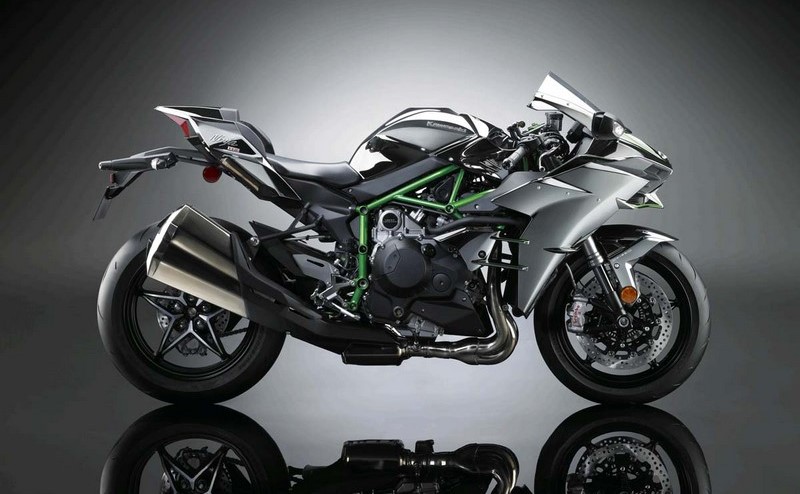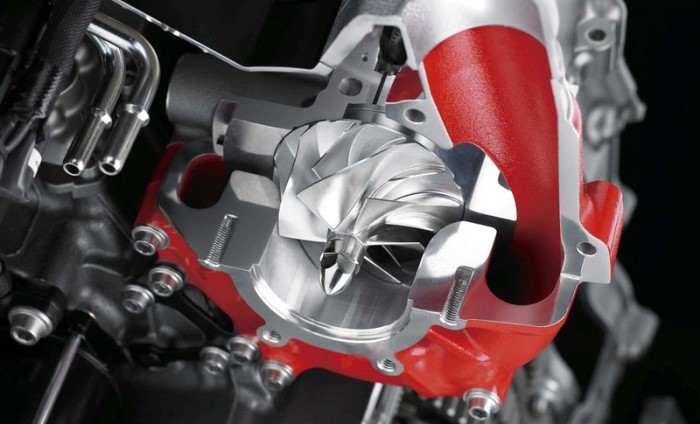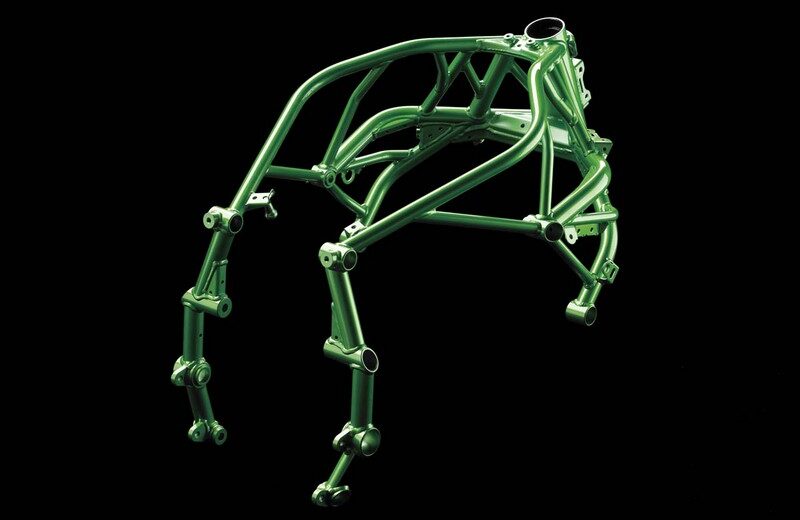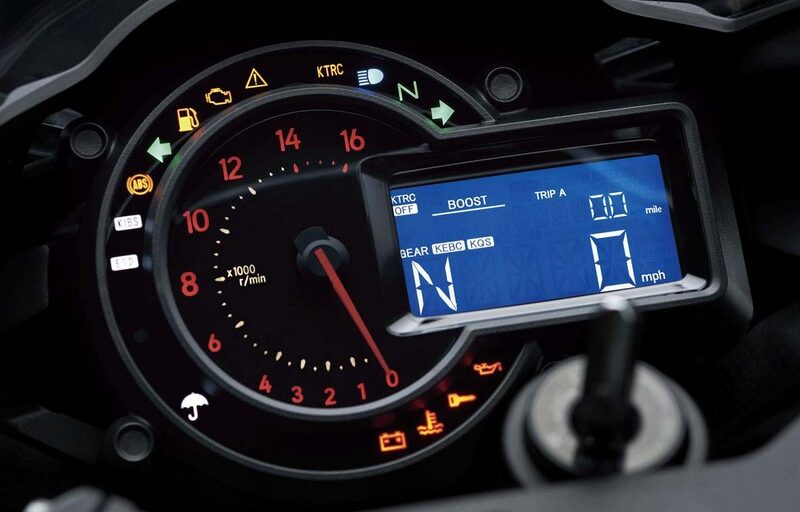The Ninja H2 and H2R, the first two commercial motorcycles with supercharged engines, were unveiled by Kawasaki more than three months ago, shocking motorcycle aficionados. In comparison to H2R, which is solely utilized for racing, H2 is more intriguing because it can be used for daily running. Now, motobikeus will bring you to Kawasaki Ninja H2 review. Let’s get started!
The Kawasaki Ninja H2 is one of Kawasaki’s Ninja sports bike models and is a “supercharged supersport” motorcycle with a variable-speed centrifugal supercharger. The Kawasaki Ninja H2 was designed to provide a riding experience that previous riders had not had. Ninja H2, Kawasaki’s newest flagship, features a 1000 cc engine with a supercharger and strong power.
How is Kawasaki Ninja H2 different from H2R?
The camshafts, head gaskets, and clutches are the only internal engine differences between the H2 and the H2R. Four flat-head pistons with stainless steel intake and Inconel exhaust valves, an alloy with exceptional heat resistance, are located inside the combustion chamber. The top and bottom halves of the engine body are constructed of steel and welded together while the lower half is also comprised of Inconel.
The supercharged engine on the H2 and H2R is essentially the same, with the exception of a few minor modifications made to the interior of the engine, as well as the intake and exhaust system to meet daily use and emissions rules. With assistance from the KHI group firms, Kawasaki engineers created the H2’s turbocharger.
The Ninja H2 and H2R are the first two Kawasaki models to utilize a single rear axle. This enables the exhaust to be located closer to the body, increasing weight distribution and allowing for a more compact design. Directly behind the engine is where the lone rear fork is situated.
Kawasaki Ninja H2 review

The optimal location for the supercharger system, which is essentially a centrifugal compressor with an aluminum housing, is in the center, behind the row of cylinders. This position allows compressed air to be supplied to all four cylinders. It is well known that this supercharger’s efficiency is outstanding. It doesn’t require a chiller because the amount of heat it generates is low.
Planetary gears connected to the crankshaft, which is constructed utilizing Kawasaki aerospace business technology, power the supercharger. The turbocharger’s propeller shaft is spinning at 130,000 rpm at 14,000 engine rpm.
The supercharger’s propeller has a diameter of 69 mm, 6 blades at the top, and grows to 12 blades as it descends. It is manufactured of monolithic aluminum. If you look closely, you can notice that the surface of the wing has tiny grooves; these grooves aid in more effective airflow. The inlet air speed is 100 meters per second, the amount of air injected is 200 liters per second, and the pressure is 35 psi.
Unlike typical gearboxes, which change gears using a sliding mechanism. Only the outer gear rings of the H2’s unusual Dog-Ring gearbox slide to each different gear setting; the inner gear rings remain stationary. Lighter gearshifts and better feel are the results of this.

On the left side of the Ninja H2, a single air inlet draws air into the supercharger. This tube, which is rather huge, resembles a chassis but is actually just the green steel tubing you can see in the image as the frame. The supercharger input area is only one-third the size of the front air intake area. The wind box is composed of metal rather than plastic and has a 6 liter capacity.
A more uniform and misty mixing of air and fuel is produced thanks to the coating of stainless steel mesh plates on the intake hopper. While the exhaust port is simpler and has a straight shape to help with better exhaust emissions, the intake door has a rather complex structural construction. When the outlet reaches the exhaust neck, its oval exterior tapers into a circle.
The vehicle’s hollow steel tube frame technology gives it the best balance, rigidity, and flexibility, and its open design improves heat dissipation from the turbocharger. The KYB AOS-II type of front suspension was created for race vehicles. It may be adjusted and has a 43 mm range of motion. From underneath, it is seen that the rear shock absorber system, which also originates from KYB, is connected to the rear fork by a metal connection.

The degree of driving safety is further increased as a result of the efficient heat dissipation provided by the Brembo Style-ma brake calipers and Bridgestone RS11 tires. The Ninja H2 is notable not just for its updated engine but also for its paint job, which can, in the correct conditions, “self-heal” from minor dings.
An LCD screen and an analog clock are combined on the Ninja H2’s dashboard. Basic details like engine rpm, speed, mileage, gear position, etc. are given to the driver. Also included is information on the traction control and launch control systems for the KTRC. KQS rapid gearshift support system, KIBS intelligent anti-lock braking system, KEBC engine brake control system, and KLCM engine.
Additionally, the watch contains a ton of incredibly useful smart functions, like the ability to turn on or off ABS, tailor the running mode, change the automated throttle mode, configure the rapid gearshift system, and many other sophisticated features. The Ninja H2’s LED lighting system has also been updated with the most recent technology to further reduce electricity use.

A switch cluster coupled to a TFT color screen with four modes of display is used to change the vehicle’s technical characteristics. Additionally, using Bluetooth with a phone makes it simple and quick for users to check the maintenance schedule for their vehicle, review the trip record, and remotely monitor the battery status and fuel level.
The H2’s driving posture is intended “for driving at high speed and on the track,” according to the manufacturer. With a driver’s hip support pad that can be modified to suit each rider, the driving position is reported to be similar to the ZX-10R but more comfortable.
The H2’s unmatched brutality never gets old, but its supercharged power delivery is still scrumptiously smooth and, owing to excellent electronics, approachable. Improved braking performance, greater grip, and a more upscale dash make up for the low-rpm throttle response that is still overly sensitive and the unpleasant seats after a while. The H2 became a classy and attractive sports car as a result, turning it from an expensive drag racer.
Final Words
When it is released, this sports car known as the “speed ghost” will become the most technologically advanced motorcycle with the safest assist technology. The Kawasaki Ninja H2 has earned a particular place in the hearts of motorsport enthusiasts thanks to its highest rated speeds, speed comparisons between this superbike and a number of supercars, or even the fact that it has even outperformed the jet in some competitions.
Thank you for coming to our Kawasaki Ninja H2 review!
Learn more: List Of Types of Different Motorcycles: Top 7 Famous Bikes Around The World!

